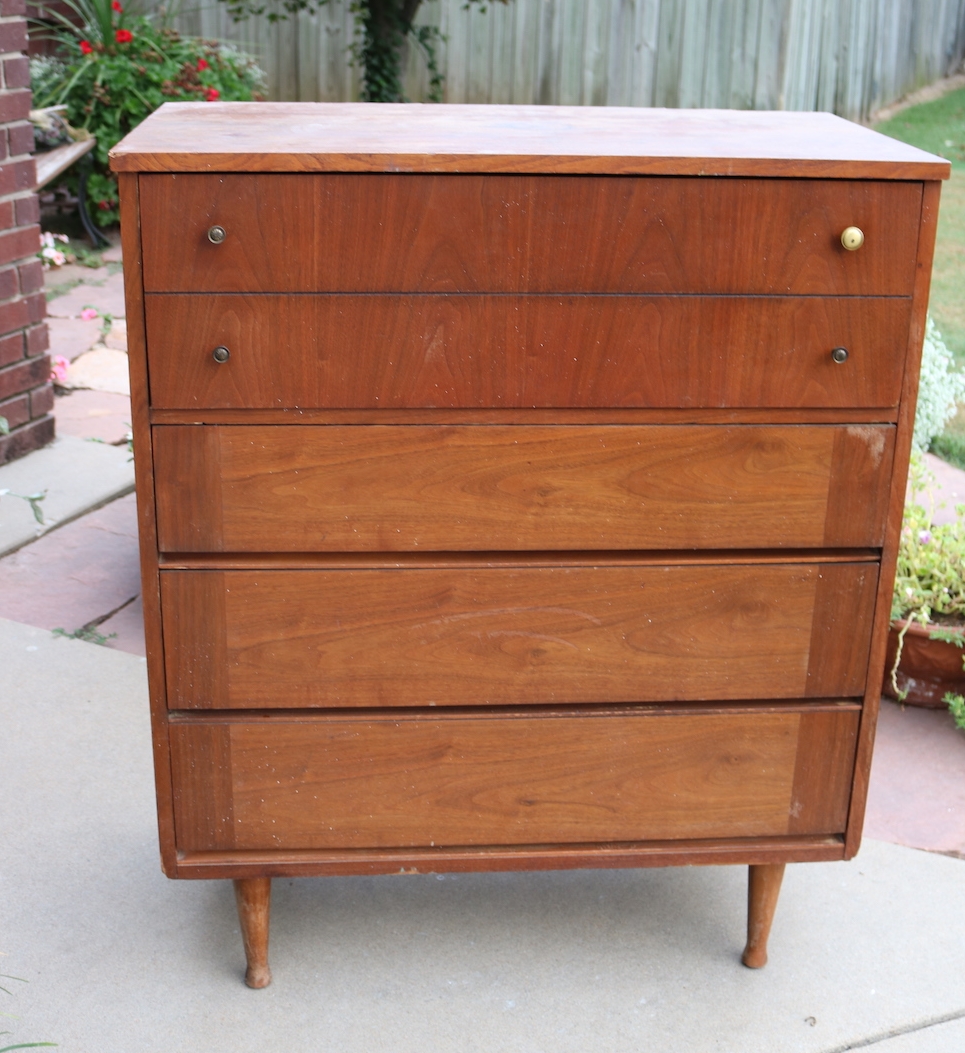Antique dresser makeover....
It’s no secret that this antique dresser is really not “my style.” But I knew it could be beautiful with just a little work…
Okay, so it needed A LOT of work!
One of the first things I do when I buy an old piece like this is really examine it and figure out what, if anything, needs repairs and what is “salvageable.”
It would have been super easy to just slather the whole thing in paint, but I love the combination of paint and wood tones…and if I can salvage any of the wood by refinishing rather painting, I’m going to.
The drawers were in excellent condition…they were intact and they did not “stick.” The only real issue was the missing veneer on the front of the cabinet….a little wood filler and sanding fixed it right up.
The top was in relatively good condition…it did have a few “blemishes.” I have “fixed” blemishes using oxalic acid and it works wonders on solid wood surfaces. But this top is a wood veneer and I haven’t had as much luck on veneers…so I just “embraced” the blemishes and let it be what it is…an old piece with a history.
The drawer fronts were in mint condition…just super yucky. The top and drawer fronts were easily stripped using the 1/2 acetone and 1/2 lacquer thinner mixture. I scrubbed them with #2 steel wool and the mixture, wiping with old rags from time to time. After all the old finish was removed, I “washed” them with mineral spirits and applied three coats of tung oil finish, rubbing with 0000 steel wool and tack cloth between each coat. No stain, just a clear finish!
Rather than refinish the “cabinet” I chalk painted it with homemade chalk paint. My recipe for chalk paint is 5 tablespoons of Plaster of Paris and 3 tablespoons of water, mixed well. Then I add 2 cups of flat paint. I painted two coats and distressed, then sealed it with polyurethane. Again, I do not wax over chalk paint…I just don’t think it is a durable finish.
I was SUPER pumped that ALL the original hardware was there…even the top drawer knobs. They had been replaced but the original knobs were in the drawers…major score! They are just so unique and authentic!
Often the stain is mixed into whatever finish is applied. They did this to make the piece look “uniform.” When you strip the original finish, there is a good chance you are going to strip the original stain color…you WILL see the wood grain and there is a good chance the “color” of the piece will be different. For example, the drawer fronts on this piece were a different tone than the top when all the old finish was stripped away…personally I LOVE this look! But if you want that “uniform” look you need to be prepared to stain the piece…and since different woods stain differently, I would suggest using a gel stain application…that is the only way to ensure a “uniform” look. Or in this case, you could paint the top and only leave the drawers original. To each his own!
This is just one of many I shared on Instagram…and there are even more that aren’t pictured here. Over the next few weeks I will share how each dresser’s makeover!
Each one required a different process to bring it back to life!
Stay tuned!


